So you want to start prepping for a disaster but you don’t know where to start. You have a busy life and don’t really have time or build a one year food stockpile, you just want to get a few emergency essentials to be covered in most disasters.
I’m glad you finally realized that things like extended power outages, heavy storms, tornadoes, hurricanes, earthquakes, house fires, flash floods, riots, or even war can happen (many of them do happen on a regular basis!), and that you’re ready to need to keep yourself and your family prepared.
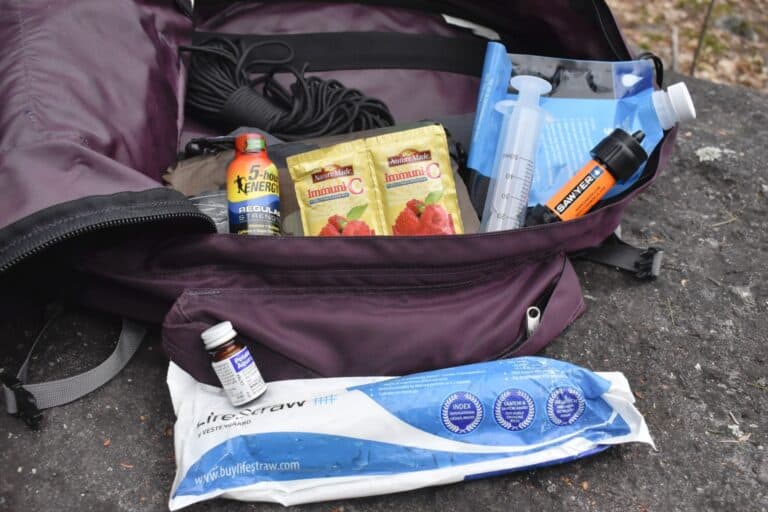
The best way to go about it it is to think it terms of the most basic survival needs. Food water, and shelter are at the top of the list, while basic emergency communications should also be considered.
Ideally, you’ll want to get almost everything on the lists below, but remember that some of these disasters may not apply to you (e.g. tornadoes).
Still, it’s good to be aware of them in case you’re travelling to another part of the country (or the world) that has them.
Table of Contents
Water
One gallon of water per person per day – that’s the rule of thumb. Of course, you’ll need more for things like washing clothes and watering your garden, so the more you have, the better.
Start with plastic water bottles, then increase the size of the containers you use as your prepping efforts expand. Also, keep in mind that children, women who are pregnant, and household members with various conditions, may need more than a gallon of water a day.
Bottom line: stock up as much as you can because you never know when you might need it. But don’t forget to leave space and a budget for the rest of the survival essentials we’re about to cover.
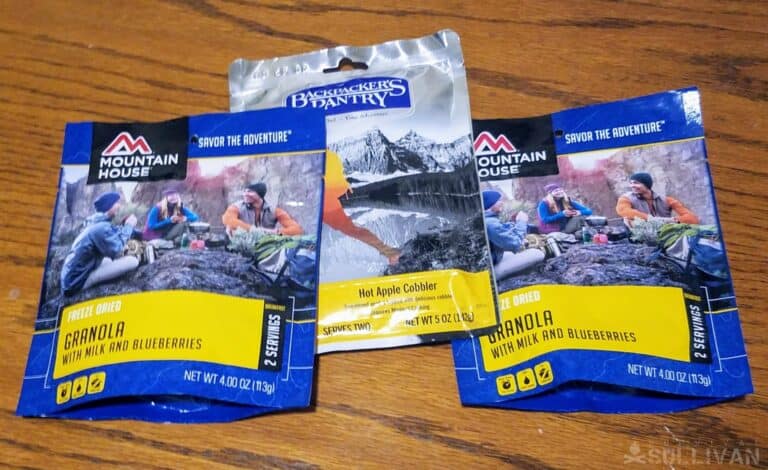
Food
You’re going to need at least 3 days’ worth of food for your entire household, but a 7 days supply would be better.
If you’re not looking to spend too much time on this, here are the best and quickest survival food options available:
- Canned food. You’re gonna have to rotate and replenish your cans once a year but canned food is something a lot of people eat every year and it tastes great.
- Freeze-dried food. Wise Foods has some of the best survival foods out there.
- Snacks such as energy bars, Granola bars, protein bars, etc. Make sure you only get those with a shelf life of at least 6 months (which is enough for our purposes, until you’re ready to start a true stockpile).
- Nuts, seeds, dried fruit; There are lots of calories in all of these.
- Pemmican.
- Pet food! Don’t forget Lucky, he wants to survive too, and continue to love and protect you.
Also, don’t forget to stockpile the things needed to open and consume those foods. The last thing you want is to have lots of cans, but no can opener.
First Aid
I already covered this in-depth in a previous article but, if you’re only looking for the essentials, your first-aid kit should have the following:
- Bandages! Lots and lots of them, of all shapes and sizes;
- Alcohol wipes;
- Trauma dressing;
- Hand sanitizer;
- CPR mask;
- N 95 respirators (one for each family member);
- A SAM splint;
- Instant cold packs;
- Ibuprofen;
- Aspirin
- Antibiotic cream;
- Iodine tablets (in case of radiation)
- Rubbing alcohol;
- Benadryl
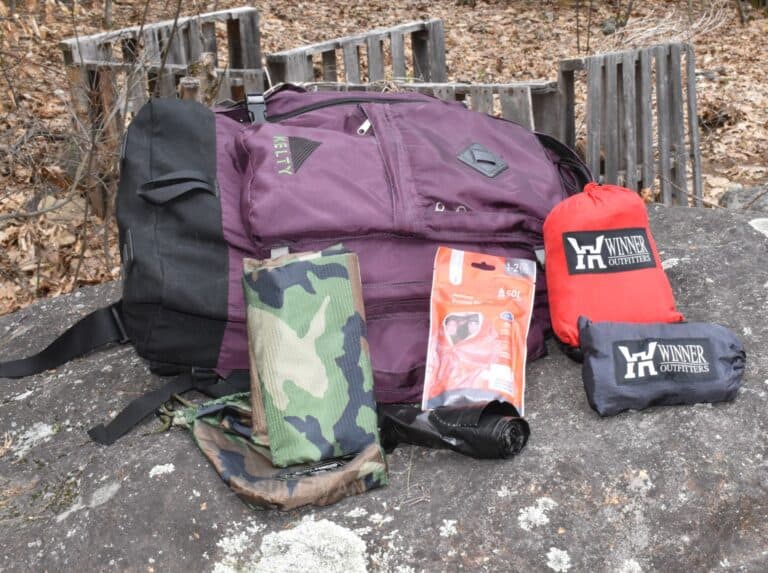
Shelter and Warmth
Who’s to say you’ll be safe inside your home during the next disaster? You might have to bug out from your home and any number of things can happen. You might have to bug out through the woods on foot.
You might be able to drive off with your car, to a different state or you might be forced to spend the night inside. And let’s not forget that things like heavy storms can keep you inside your home for days or even weeks.
Consider:
- emergency blankets;
- extra clothing (underwear, socks, t-shirts, sweater,s jackets, hats, bandanas, etc.). Instead of throwing old clothes away, you might as well store them in your attic just in case.
- a tarp
- a poncho (to protect yourself from wind and rain);
- a tent or a bivvy bag;
- sleeping bag
- hand and body warmers;
- at least a couple of ways to start a fire: strike anywhere matches, a magnesium fire starter, and so on;
Staying Cool
Now that you prepared for winter and ice storms, you should also consider heat waves. High temperatures can be just as detrimental (if not deadly), so make sure you have:
- fans
- window reflectors
- hats
- cold packs
- sunscreen
Off-the-Grid Cooking
The food from your freezer is what you’re going to want to eat first after it hits the fan, because it has the shortest shelf life (particularly if there’s a power outage and your fridge and freezer stop working).
Disclosure: This post has links to 3rd party websites, so I may get a commission if you buy through those links. Survival Sullivan is a participant in the Amazon Services LLC Associates Program. As an Amazon Associate, I earn from qualifying purchases. See my full disclosure for more.
As far as cooking is concerned, gas, butane, and propane stoves (such as this one) are also good options so long as you do your cooking outside.
Even the stoves that are advertised as “not needing any ventilation” should be used with care. They have their own ventilation built in, and they do leak carbon monoxide, even if only in small quantities.
If you plan to use stoves indoors, make sure you open your doors and windows to avoid CO build-up!
Either way and just to be safe, I strongly recommend you get a CO sensor. It’s only a few bucks and could prevent a tragedy.
Carbon monoxide is odorless, colorless, and tasteless and, around the year 2000, it was killing 500 Americans a year (not sure how much that is today, though).
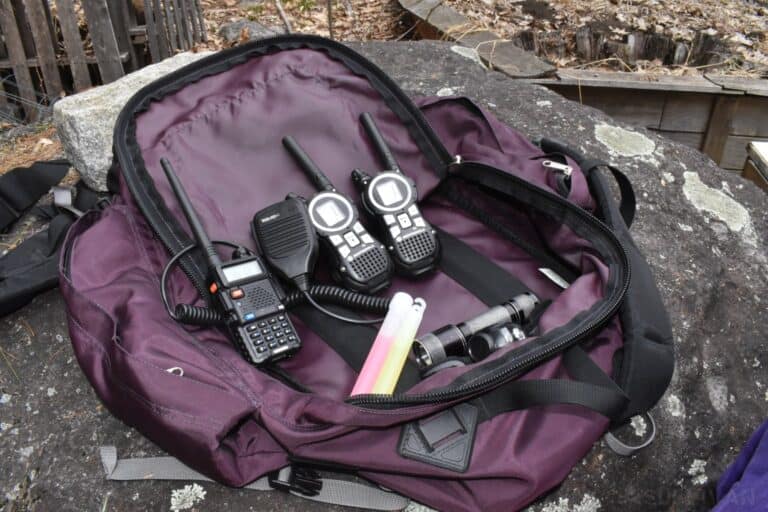
Communications and Navigation
We spoke about emergency communications in a previous article but, at the very least, you are going to need:
- a NOAA emergency radio with spare batteries
- extra phones, chargers, and batteries
- even a few walkie-talkies for short-range communications
In addition, consider these:
- a signaling mirror (any kind of mirror will do);
- a good compass
- pen and paper
Lighting Your Way
Since most of these disaster scenarios come with power outages, you’re gonna need several ways to see at night, using:
- flashlights
- oil lamps
- or candles
Of course, there are a lot more options than these. For instance, you can opt for a hand crank LED flashlight (such as this one) so you’re never completely dependent on batteries.
Other Emergency Items
I’m just gonna add here the things that, although important, didn’t quite fit into the other categories:
Always have cash (in case the ATM machines and credit cards won’t work).
Consider multi-purpose items. For example, you can get portable radios (such as Red Cross’s FRX3) that are battery operated as well as hand-crank, and also have flashlights, and can charge your cell phone.
Speaking of multi-purpose items, I strongly advise to have you have these items that have a million and one uses each:
- duct tape
- Paracord
- bleach
- and Ziploc bags
- a good multitool
- folding knife
Have a bug out bag. Ok, so, at this point, you may not want to consider a B.O.B. because you think it’s a little too much but, really, such a bag will have a lot of the things we talked about in this article.
The only difference is, they’ll all be in one place, ready to go. Lots of articles out there on how to build one and I invite you to check out mine here.
Maps. It’s always good to have maps of the area you live. If you can get them laminated, that’s even better.
Keep power, gas, and electric bills on hand to have these companies’ phone numbers available in case of gas leakage or other emergencies.
You may want to circle all of these phone numbers in red or, even better, make a list of all of them that you have in key places around the house. If you can get those cards laminated in plastic, even better.
Have an extra pair of reading glasses. Whether you’re on the road or stuck inside your home, you’re gonna need them like air.
Extra sets of keys to your house, your garage, your car etc. You never know how often you’re gonna lose the ones you use on a daily basis.
Copies of all your important papers. Again, if you can laminate them, that’d be great.
Consider insect repellents. You probably won’t be able to buy new ones from the supermarket, either because it’ll be closed, or because you won’t have access to one.
Bugging in or Out
A good evacuation plan and a reliable bug out vehicle can sometimes be worth more than all your preps put together. In case of emergency, you and your family need to know what to do, who to call, where to rally, and be able to make split-second decisions (such as bugging in or out).
Once you have that plan put together, the next thing you need to do is to practice some drills so you make sure everyone knows what they have to do when it finally happens.
Waiting until utter chaos rules the streets to test your survival knowledge is a common rookie mistake, one that you do NOT want to make because it can cost lives.

You can get a printable version of this checklist here.
Final Word
I tried to keep this list short and focus on the essentials because I didn’t want to overwhelm you. Are there any other emergency essentials that should be here? Let me know in a comment below.
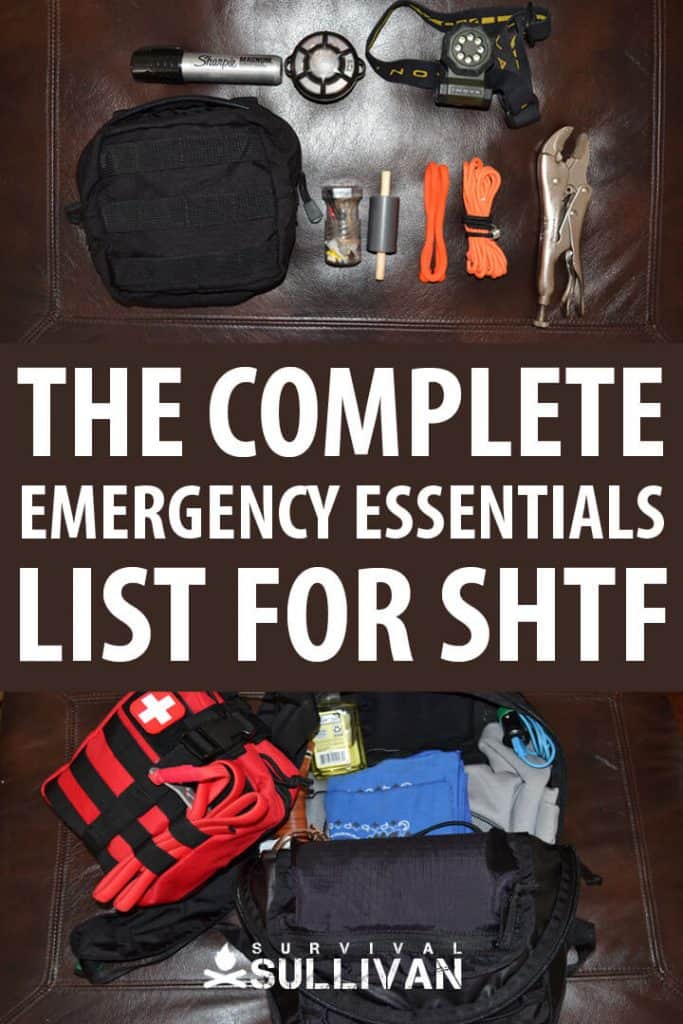

My dad was military. My grandfather was a cop. They served their country well. But I don’t like taking orders. I’m taking matters into my own hands so I’m not just preparing, I’m going to a friggin’ war to provide you the best of the best survival and preparedness content out there.

When it says have cash, have in $1 & $5 bills. People will not have change.
Yeah, you don’t want to pay $5-10 for a loaf of bread.
A very simple, inexpensive, and never noticed method for lighting, is solar pathway lights. In an apartment, make a small patio or window sill garden (I actually used fake plants). Place the individual solar pathway lights in the pots or between the pots. When the sun sets, bring the lights inside to use for illumination. You will ALWAYS need a flashlight, but solar pathway lights are hidden in plain site and can be used at night within your residence to reduce your dependence on your flashlights and battteries.